Casey Evans on AI’s Impact on Business Education
Key Points
-
The Kogod School of Business has strategically infused AI literacy into all levels of its programs, ensuring students are prepared for a future shaped by AI.
-
Recognizing the unique challenges faced by Gen Z, the curriculum includes professionalism and communication training to equip students with critical soft skills.
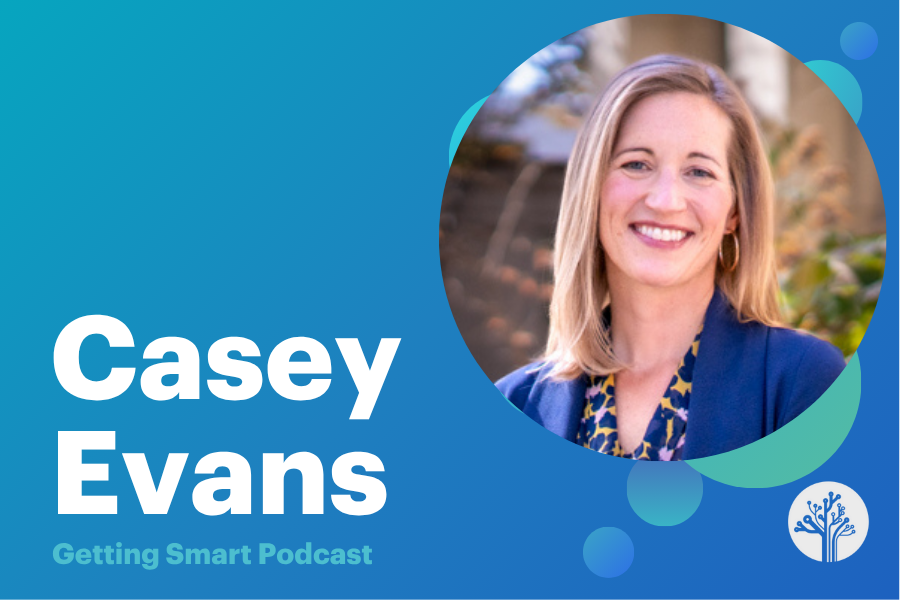
In this episode of the Getting Smart Podcast, Tom Vander Ark sits down with Casey Evans, Associate Dean for Undergraduate Programs at American University’s Kogod School of Business, to explore how AI is revolutionizing specifically business education. From integrating AI literacy across a fully redesigned curriculum to emphasizing professionalism and communication skills tailored for Gen Z, Casey shares how her team is preparing students for the future of work. Discover innovative approaches like interdisciplinary first-year courses, AI-infused learning paths, and the launch of new programs like the AI and Business Analytics major. Tune in to learn how the Kogod School is leading the charge in equipping students with both the technical and human skills needed to thrive in a rapidly evolving workforce.
Outline
- (00:00) Introduction to AI in Business Education
- (04:52) Integrating AI and Professional Skills
- (09:14) Fostering Professionalism and Communication
- (12:27) AI Literacy Across All Majors
- (16:13) Entrepreneurship and Business Education
- (22:37) Conclusion and Acknowledgements
Introduction to AI in Business Education
Tom Vander Ark: How is AI changing business, and how is business education changing? In response, you’re listening to the Getting Smart podcast. I’m Tom Vander Ark, and today we have the good fortune of speaking with Casey Evans. She’s an associate dean for undergraduate programs at the Kogod School of Business at American University.
Some have said that the transformation there in the last two years might be the most consequential AI transformation in business education. They have about 58 courses that have been transformed. They have a great partnership with Perplexity. They created an Institute for Applied AI, which is a very exciting, multidisciplinary, cross-campus hub. Casey, as a finance and accounting professional, I’m really interested in your take on what is happening with AI in business. And very specifically, how do you see it changing the nature of work, particularly in finance and accounting?
Casey Evans: Right. Well, Tom, thank you so much for having me. I’m a member of the accounting faculty at American University in addition to being the associate dean for undergraduate programs. With my hat as an accounting professor—and I spent a lot of time in consulting before joining the faculty—AI is changing the finance and accounting space just like it is everywhere else. I think where we’re seeing the most change is in efficiency. Tasks that took much more time in the past can now be done much more quickly.
For example, I’m a forensic accountant by training. When I started working, we would have to review every single email and every single piece of documentation manually. Now, with the help of programs, something that would have taken me a week to do can be done in minutes. We’re seeing that in every aspect of the working world. You hear about it in marketing and finance. Our finance students, when they start their jobs in New York, for example, are doing financial forecasts in minutes, whereas just a few years ago, it would have taken weeks of research. The efficiency piece is really significant.
What we’ve been hearing from employers over the last two years, as AI becomes more integrated into our lives, is that this is going to be revolutionary. AI in business is going to completely change the field. That theme has continued. When our students ask these leaders, “Will AI replace me?” the response is still, “No, AI will not replace you, but if someone knows AI and you don’t, you are not getting the job.” We have adjusted accordingly based on what we’re learning from those leaders.
Tom Vander Ark: I appreciate that take. The euphemism has become, “AI won’t take your job, but somebody using AI likely will.” Did you begin to observe that in 2022 and start to understand that the profession is changing quickly and that the business school probably faced an existential threat of becoming irrelevant if you didn’t adapt?
Casey Evans: Correct. Coming out of COVID, we realized we needed to completely revolutionize how we teach our students to best prepare them for the future of work. Our faculty at the Kogod School of Business at American University recognized that if we didn’t change—especially as a private school that needs to stand out to attract students—we would be in real trouble. We completely redesigned our undergraduate core curriculum, and I’m happy to share details about that.
The redesign process took about 18 months and involved thorough discussions with industry leaders and employers hiring our students. We asked them what they needed from our students and how we could better prepare them. Based on their feedback, we adjusted our curriculum and completely changed our undergraduate core business curriculum.
Integrating AI and Professional Skills
Casey Evans: These are the classes that all business students take, regardless of their major, to infuse AI into the curriculum while also emphasizing professionalism and communication. When we talk to employers and industry leaders, they tell us that our students need to be prepared with AI literacy, but they also need to communicate ideas effectively and think critically. If AI can handle much of the legwork that was originally done by incoming consultants, we want to ensure our students are skilled in prompt generation and know how to push AI to ask the right questions and extract deeper information.
This has become a significant focus of what we’re teaching our students.
Tom Vander Ark: I think it’s been true for quite a while that most successful transformation initiatives combine top-down and bottom-up change efforts. I get the sense that this was true at the business school—that there was leadership from the top to clarify the mission and mandate, but there was also significant faculty involvement in piloting and reimagining the curriculum. Tell us more about the change process and its key elements.
Casey Evans: It was absolutely a faculty-driven, stakeholder-driven project. That was the only way we could get it done. For example, I’m an AU alum, and when I looked at my transcript from when I studied accounting at Kogod, the core classes I took were pretty much the same as what we were teaching our students. It was time for real change.
Our old curriculum was very siloed, and students weren’t understanding how interconnected business really is. When students said, “I don’t know why I have to learn X,” it showed us that we weren’t effectively demonstrating the interconnectivity of business. A lot of our changes focused on making the first-year portion of the curriculum much more interdisciplinary and emphasizing how connected business is.
Faculty drove this change. We conducted at least six months of research, talking to alumni, employers, students, and parents to understand what they needed and what employers were saying we needed to improve. The changes we made included making the curriculum more interdisciplinary and moving core coursework to the first year. Now, all of our students start studying business on day one. They take six business classes in their first year, giving them a solid foundation. By the time they launch into their major in their junior and senior years, they are much more prepared.
We rolled out this new curriculum this past year, and it’s working great. We’re getting positive feedback from students, alumni, and guest speakers. For example, guest speakers have noted that our students are more engaged, better prepared, and more professional.
Shorts Content
Fostering Professionalism and Communication
Casey Evans: One of the big pieces we’ve added to our curriculum is professionalism and communication. A lot of the work we did focused on understanding Gen Z and their needs. Our old curriculum was more millennial-focused, but our new curriculum is designed with Gen Z in mind. Many of our current students spent their high school years during COVID, which impacted their formative experiences.
For example, we noticed that students weren’t attending events featuring major leaders in business. Initially, we assumed they didn’t care or preferred to spend time with friends. However, when we asked them, they told us they knew these events were important but were afraid to attend because they didn’t know how to act or network in those settings. They didn’t feel they had the necessary skills.
Recognizing this, we decided to teach them. In their first semester, students take a professionalism and communication class where they learn how to write proper emails, deliver a one-minute pitch about themselves, work in teams, and collaborate effectively. We’re about a year into the new curriculum, and we’re already seeing positive results. Guest speakers and alumni have noted that our students are more engaged, connecting on LinkedIn, and attending events in greater numbers. By teaching these skills explicitly, we’ve created a success story that’s more Gen Z-focused.
Tom Vander Ark: Those are exciting elements of a redesign. I love how you’ve prioritized human skills, made them a priority, and integrated them early in the program. I also appreciate the idea of getting students involved in career-connected learning right from the start. Is this approach unusual at American University, or are similar efforts underway at other schools? Are you leading the way?
AI Literacy Across All Majors
Casey Evans: In terms of our redesign, we’re leading in this space, particularly around AI. I’ve already shared what we’ve done on the human side, but we’ve also been very focused on infusing AI into our coursework. Many schools are doing this, but we’ve taken a strategic, program-wide approach.
For example, in our first-year classes, students are introduced to AI and taught to think critically about it. We want them to evaluate how AI can help and where it might fall short. They also learn our expectations for its use at Kogod and how it can enhance their projects. Over the past year, I’ve seen student deliverables improve significantly when they use AI properly. Their presentations are more substantive and better organized, and they’re able to go deeper into the content.
In their second year, students take introductory courses in finance, marketing, management, and accounting, where they learn to use AI tools specific to those fields. By the time they launch into their majors, they’re using AI tools deeply within their disciplines. In their capstone courses, they apply AI extensively, integrating it into their final projects.
This isn’t just about offering an elective here or there. We’re ensuring that all students are comfortable with AI. Additionally, we’ve rolled out an AI major, minor, specializations, and badges, giving students various ways to demonstrate their AI proficiency.
Tom Vander Ark: I think yesterday you may have announced a new business analytics and AI degree—an undergraduate major and minor.
Casey Evans: Yes, it was just approved by our board of trustees yesterday, and we’re thrilled about it. Students can major in this if they’re business students, or they can minor in it if they’re studying other fields like communications, political science, or international service. We’re making it accessible to everyone. For those who want to major in something else but still gain AI proficiency, we offer badges and other credentials.
Entrepreneurship and Business Education
Tom Vander Ark: We haven’t talked about entrepreneurship, but we appreciate Ethan Mollick at Penn pointing out as early as 2022 that AI would be a big deal for entrepreneurship. He illustrated how it could improve entrepreneurship and entrepreneurship education. Charles Fadel, a scholar on student outcomes, has said entrepreneurship is the job of the future. Is entrepreneurship a higher priority at the business school? Are the skills that go along with it, like agency and initiative-taking, part of this initiative?
Casey Evans: I completely agree. Teaching entrepreneurship helps students understand business as an interconnected system. For example, in our intro to business course, we teach from an entrepreneurial lens because entrepreneurs need to know all aspects of business—they can’t just focus on one area like marketing.
Our first-year students complete a project where they create a new product. They figure out how to finance it, market it, address supply chain issues, manage a team, and pitch it to an angel investor at the end of the semester. This approach helps them develop an entrepreneurial mindset, which is essential for the future of work.
Tom Vander Ark: I want to talk about credentialing and licensure. Accounting, finance, and law are gated by professional licensure, and they seem to be moving slower than you are in reimagining entry into the profession. What’s your take on licensure and signaling, and how has that impacted your work at American University?
Casey Evans: In the accounting space, there is movement to reduce barriers to entry. There’s a shortage of accountants, with many professionals retiring. The profession recognizes that the barriers built over time need to be reevaluated to attract more people. For example, the CPA exam has been adjusted to make it more accessible.
In higher education, we’ve also had to remove barriers. Our accounting curriculum still prepares students substantively for the exam, but we’ve made adjustments to ensure more students can enter the profession.
Tom Vander Ark: Are you seeing increased demand for your undergraduate and graduate programs as a result of the redesign? Are you considering new post-baccalaureate programs, executive education, or certificates?
Casey Evans: Yes and yes. Despite the challenges in higher education, we’ve seen our numbers continue to grow. Our incoming class for fall 2024 was the largest we’ve ever had, and fall 2025 is even larger. Students are choosing us because of the buzz around our AI initiatives and curriculum changes.
We’re also starting to explore executive education. We’ve had interest from alumni and companies in D.C. who want us to train their employees on AI tools. We’re developing partnerships and programs to meet this demand.
Tom Vander Ark: That’s super exciting. I love the idea of the AI minor because every field has become computational. You’ve enabled students to combine fields like biology or journalism with business analytics and AI. It’s a very cool idea.
Conclusion and Acknowledgments
Tom Vander Ark: We’re talking to Casey Evans, associate dean for undergraduate programs and student success at American University. As we wrap up, I want to give you a chance to acknowledge those who have been key to your learning and this initiative. But first, tell us about your partnership with Perplexity.
Casey Evans: We’re very excited about our partnership with Perplexity. All of our students, faculty, and staff have access to their pro version. Students use Perplexity for assignments, in-class activities, and research. Faculty use Perplexity Spaces to create customized ecosystems for their classes, which helps students study and prepare for exams. We’re continuing to pilot new ways to integrate Perplexity, and the feedback has been great.
Tom Vander Ark: Who else would you like to acknowledge for their contributions to this transformation?
Casey Evans: We’ve been fortunate to have a wonderful leader in our dean, David Marchick. He’s pushed us to embrace change, which can be challenging in academia. Our provost, Vicky Wilkins, has also been a great supporter. Finally, I want to acknowledge my colleagues on the Kogod faculty. Their hard work and dedication to making positive changes for our students have been inspiring.
Tom Vander Ark: Casey Evans, American University—it’s an exciting story of responsiveness and agility at a business school that has quickly transformed undergraduate and graduate education in the nation’s capital. Check it out online. There are many great stories about the work Casey is leading. Casey, thanks for being with us, and thanks to our producer, Mason Pashia, and the whole Getting Smart team. Until next week, keep learning, keep leading, and keep innovating around AI and education. See you next week.
Guest Bio
Casey Evans
Professor Evans is a Certified Public Accountant and a Certified Fraud Examiner and has extensive industry experience handling a range of forensic accounting issues, including fraud investigations, Securities and Exchange Commission and Department of Justice enforcement actions, financial reporting and disclosure issues, technical accounting issues, and internal control reviews.
Before joining the faculty, Evans was Senior Director of Forensic & Litigation Consulting at FTI Consulting, where she specialized in conducting complex forensic accounting and financial fraud investigations in conjunction with SEC, DOJ, and corporate audit committee inquiries. Beginning in early 2009, she was part of the team of FTI investigators responsible for investigating Bernard Madoff and Bernard L. Madoff Investment Securities, one of the largest investor frauds in American history.
Links
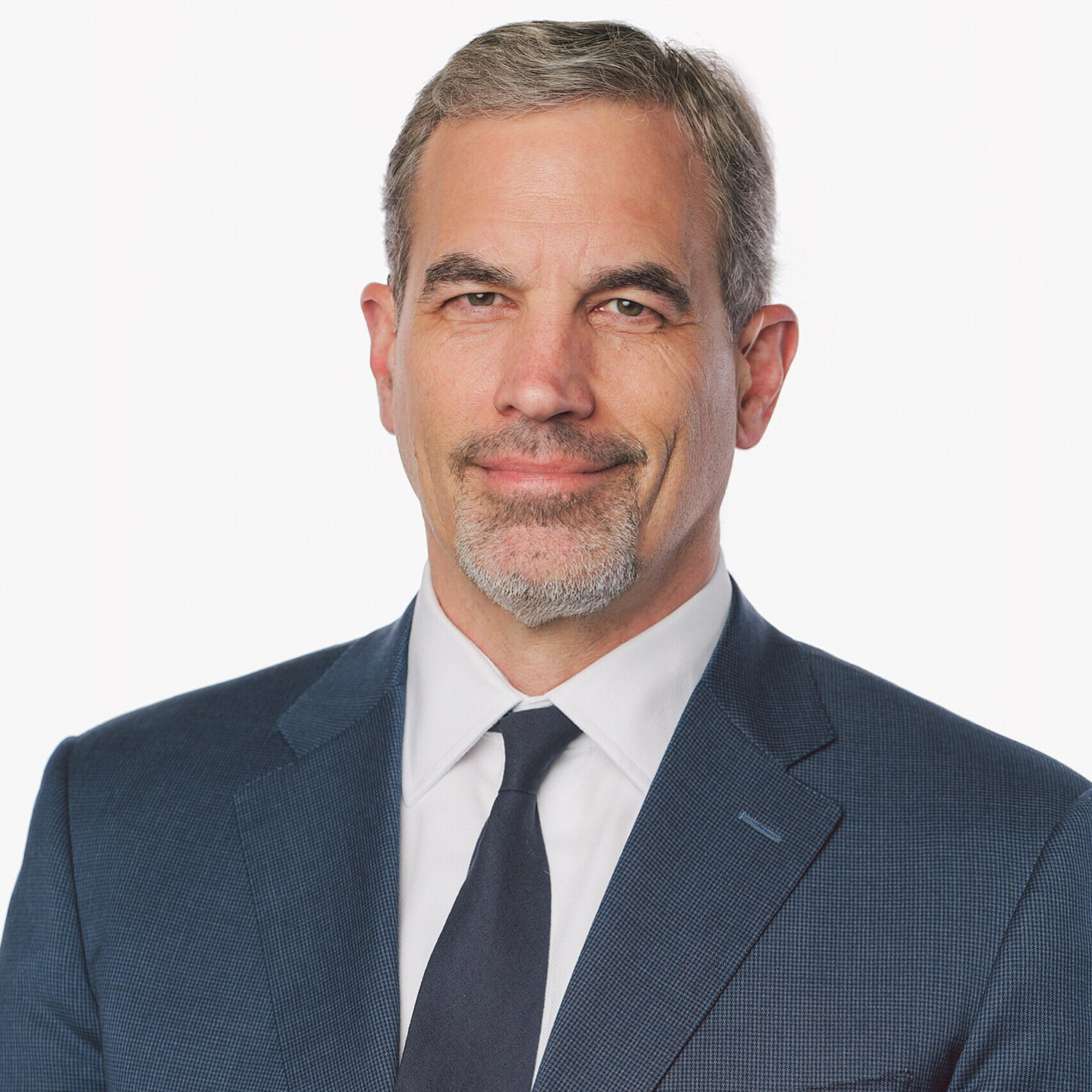


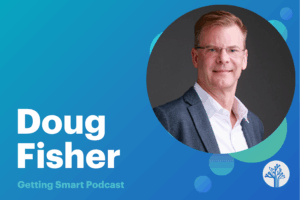
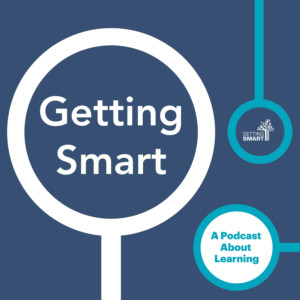

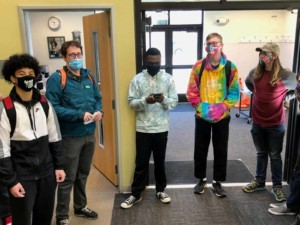

0 Comments
Leave a Comment
Your email address will not be published. All fields are required.